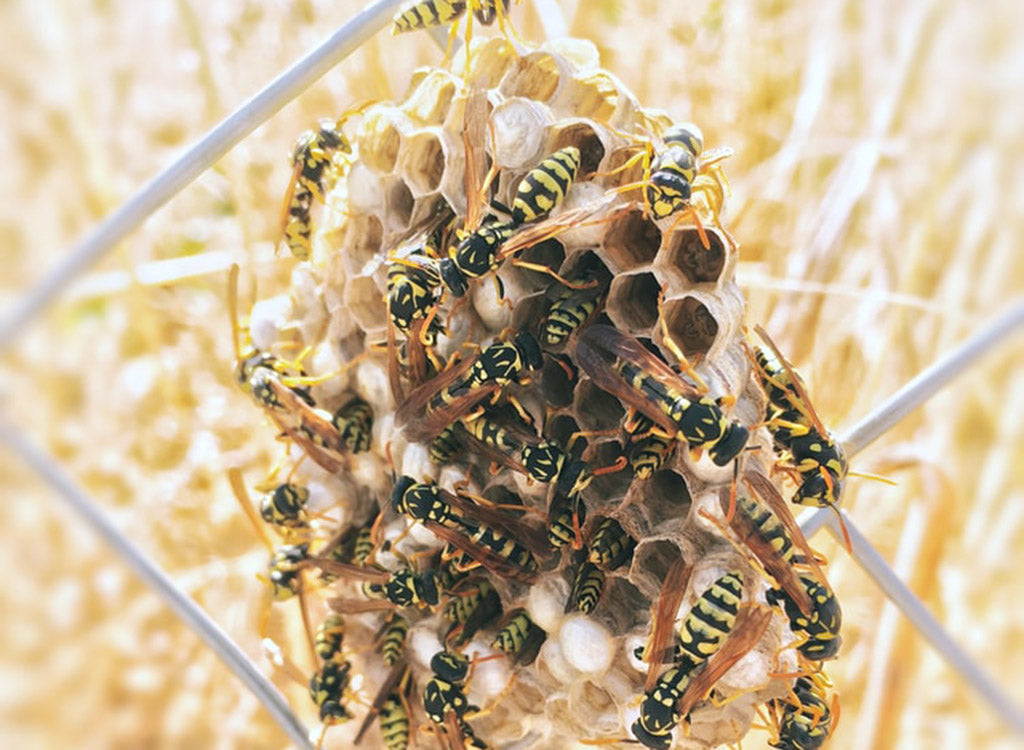The Queen Carpenter Bee: Mating and lifestyle differences between honeybees and carpenter bees.
When someone mentions bees, the image of a large honeycomb bee hive with a big queen bee probably comes to mind. It’s no wonder then that honey bees are probably the most talked about and most popular of all the bee species. And for good reason - we love the honey and wax they produce and have been studying their intricate colonies for ages. In recent years, the growing research validating the vast importance of the honey bee in pollinating our crops to make more food has also been responsible for a rise in bee awareness.
But what about carpenter bees?
The similarities between honey bees and carpenter bees are few and far between. Carpenter bees are nowhere near as helpful to our food sources (in terms of pollination activity), nor do they provide us with any tasty treats. Perhaps one of the most notable differences between the two species is the lack of a queen bee.
Carpenter bees are considered “solitary” bees, which basically means they don’t live with a colony. In fact, only a small handful of carpenter bees make up each, tight-nit nest.
Honey bees on the other hand, are termed “social” bees, meaning that they live in large colonies comprised of thousands of bees. Honey bees, by comparison, live in a far more structured world than the simple carpenter bee. Honey bees are divided into three separate castes; drones, workers and queens. The drones are all male, while the workers are all female. The male drone’s only task is to mate with the queen bee; they make up less than 1% of the colony. Once they have completed their duty, they leave the nest to die.

Honey Bees
As mentioned earlier, carpenter bees live only a few to a nest. In the spring when the new carpenter bees emerge, they begin the process of mating. For about 2-4 weeks they will look for a male carpenter bee to mate with. Once the deed has been done, the female will select a location to build a nest in. Unlike the honey bee males (drones), the male carpenter bee stays with the female carpenter bee and protects her and the nest. This male carpenter bee will use his intimidating size to dive bomb possible enemies- including yourself! Chances are he is the reason you know you have carpenter bees! While the male carpenter bee is aggressive, he doesn’t have a stinger so he can’t inflict any real harm to you. The same can’t be said for your house though...

It is difficult to snap a picture of a Queen bee as they aren’t often found outside of the nest. Here are two Valley Carpenter Bees, (Xylocopa varipuncta). The larger of the two is a female bee and the smaller golden bee is a male.
For how few carpenter bees comprise a nest, it is amazing how much structural damage they can cause to a home. Don’t forget, it’s vital to put your traps up in spring time at (or preferably before) mating season begins.
Oh, and don’t worry about catching honey bees! Our carpenter bee traps are designed specifically for the solitary carpenter bee using environmental mimicry - a fancy way of saying we built them a house with just the right kind of soft, pliable wood. Such a home is not at all attractive to a honey bee.
So, you can breathe a sigh of relief knowing you won’t catch the wrong critter on accident.









2 comments
Customer Support
@Joyce – If you catch the male carpenter bees, the female carpenter bees and babies would have less protection. Male carpenter bees are their protectors. Note, there is not one queen bee when it comes to carpenter bees. ~Customer Support
Joyce Balich
Hi, if I catch all the male carpenter bees in your trap, what happens to the queen carpenter bee and babies nested in a bored hole in my woodwork? Thanks.
Leave a comment
All comments are moderated before being published.
This site is protected by hCaptcha and the hCaptcha Privacy Policy and Terms of Service apply.